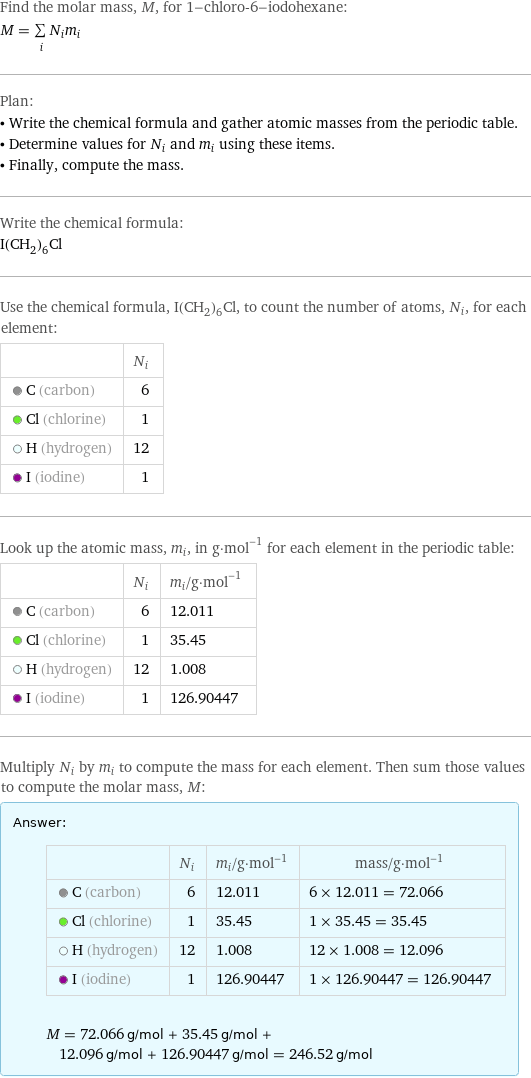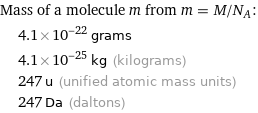Input interpretation

1-chloro-6-iodohexane | molar mass
Result

Find the molar mass, M, for 1-chloro-6-iodohexane: M = sum _iN_im_i Plan: • Write the chemical formula and gather atomic masses from the periodic table. • Determine values for N_i and m_i using these items. • Finally, compute the mass. Write the chemical formula: I(CH_2)_6Cl Use the chemical formula, I(CH_2)_6Cl, to count the number of atoms, N_i, for each element: | N_i C (carbon) | 6 Cl (chlorine) | 1 H (hydrogen) | 12 I (iodine) | 1 Look up the atomic mass, m_i, in g·mol^(-1) for each element in the periodic table: | N_i | m_i/g·mol^(-1) C (carbon) | 6 | 12.011 Cl (chlorine) | 1 | 35.45 H (hydrogen) | 12 | 1.008 I (iodine) | 1 | 126.90447 Multiply N_i by m_i to compute the mass for each element. Then sum those values to compute the molar mass, M: Answer: | | | N_i | m_i/g·mol^(-1) | mass/g·mol^(-1) C (carbon) | 6 | 12.011 | 6 × 12.011 = 72.066 Cl (chlorine) | 1 | 35.45 | 1 × 35.45 = 35.45 H (hydrogen) | 12 | 1.008 | 12 × 1.008 = 12.096 I (iodine) | 1 | 126.90447 | 1 × 126.90447 = 126.90447 M = 72.066 g/mol + 35.45 g/mol + 12.096 g/mol + 126.90447 g/mol = 246.52 g/mol
Unit conversion

0.24652 kg/mol (kilograms per mole)
Comparisons

≈ 0.34 × molar mass of fullerene ( ≈ 721 g/mol )

≈ 1.3 × molar mass of caffeine ( ≈ 194 g/mol )

≈ 4.2 × molar mass of sodium chloride ( ≈ 58 g/mol )
Corresponding quantities

Mass of a molecule m from m = M/N_A: | 4.1×10^-22 grams | 4.1×10^-25 kg (kilograms) | 247 u (unified atomic mass units) | 247 Da (daltons)

Relative molecular mass M_r from M_r = M_u/M: | 247